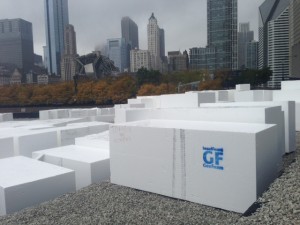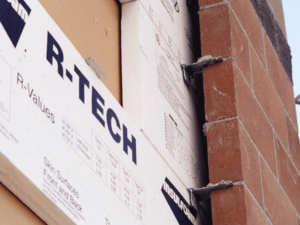Preparing for Jack Frost: DIY insulation leads the way in improving homes’ energy efficiency
Fall has arrived, and Jack Frost will soon be nipping at its heels. Weekend warriors, now is the time to roll up your sleeves, and make sure your home will see you through the coldest months of the year.
One of the best ways to ensure your heating bills don’t spike is by adding insulation to your attic and basement. You can easily tackle such projects in a weekend with Insulfoam R-tech by your side. Let’s take a look:

Up, up and in the attic
According to The U.S. Department of Energy, a properly insulated attic can save homeowners 10 to 50% on their monthly heating bill. Oftentimes, it only takes a weekend of DIY attic insulation installation to see a lifetime of savings.
Indeed, when armed with the right insulation solution, installation is a breeze. After checking local building codes and ensuring the space is air sealed, head to Home Depot, Lowes or Menards. Grab some lightweight rigid insulation panels to help prevent heat from escaping through the attic space, a common cause of heat loss. Hint: look for “R-TECH” in bold, blue letters. Based on your attic’s knee wall and rafter height measurements, easily pre-cut the boards using a table saw or straight edge and knife without worrying about pesky fiberglass splinters. For full application details, check out our blog and attic application video.
Look out below, consider the basement

Although often overlooked, basements, crawl spaces and foundations are also vulnerable to air leaks, and need to be properly insulated. For the average home, these spaces can account for a 30% energy loss.
R-Tech DIY Insulation Kits for basements, crawl spaces, walls and so forth are available at home improvement stores. They even come in fanfold options, where insulation comes folded up in a stack of 100 squares. Unfold and implement for maximum efficiency! After sealing any air leaks, making necessary repairs, accounting for knee walls and watching our basement application video, install away. By adding interior basement wall insulation, you can also get the benefit of eliminating the threat of insect infestation. Fun fact, manufactures make expanded polystyrene (EPS) insulation with a natural mineral formulated to resist wood-boring insects, such as carpenter ants and termites.
Additionally, you can use the same product for remodeling exterior walls on other parts of the house, resulting in further savings.

And one more thing
Surprisingly, the largest uninsulated space in most homes is the garage door. Given that this door acts as a large path for heat to leak out of houses, it’s important to factor this opening into insulation considerations. Insulfoam again has you covered with a Garage Door Insulation Kit, which includes 8 panels of EPS insulation that can be simply installed with the proper tools. Since the foam core is 100% recyclable and made with no formaldehyde or ozone-depleting hydrochlorofluorocarbons (HCFCs), it may be eligible for federal tax credits. Learn more with our Easy Weekend Project breakdown and step-by-step video.
Winter ready with DIY installation
In advance of Jack Frost’s arrival this winter, get your home shipshape by insulating from top (attic) to bottom (basement). Likewise, garage door insulation additions will contribute to energy savings, and have your family warm and comfortable as frost, ice, snow and sleet wage on outside.




